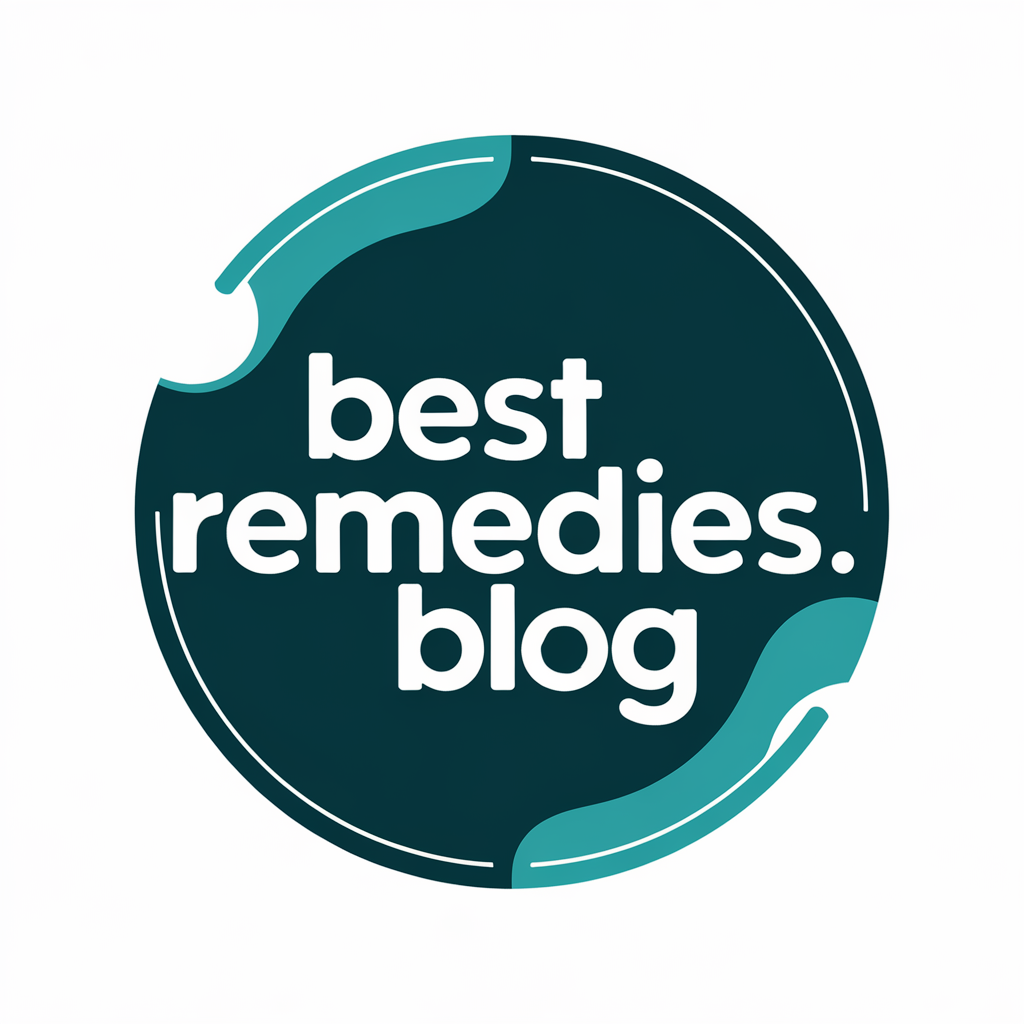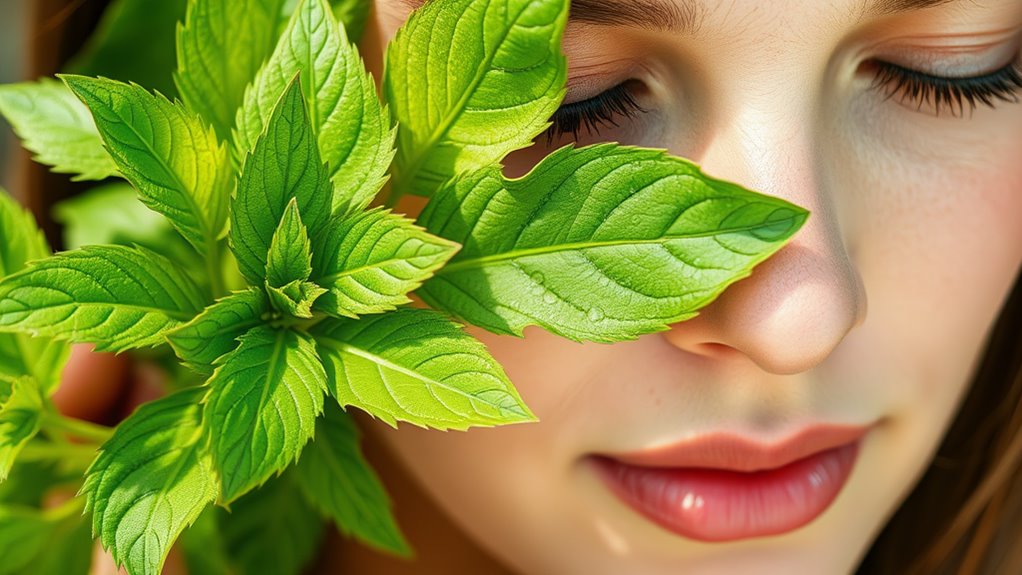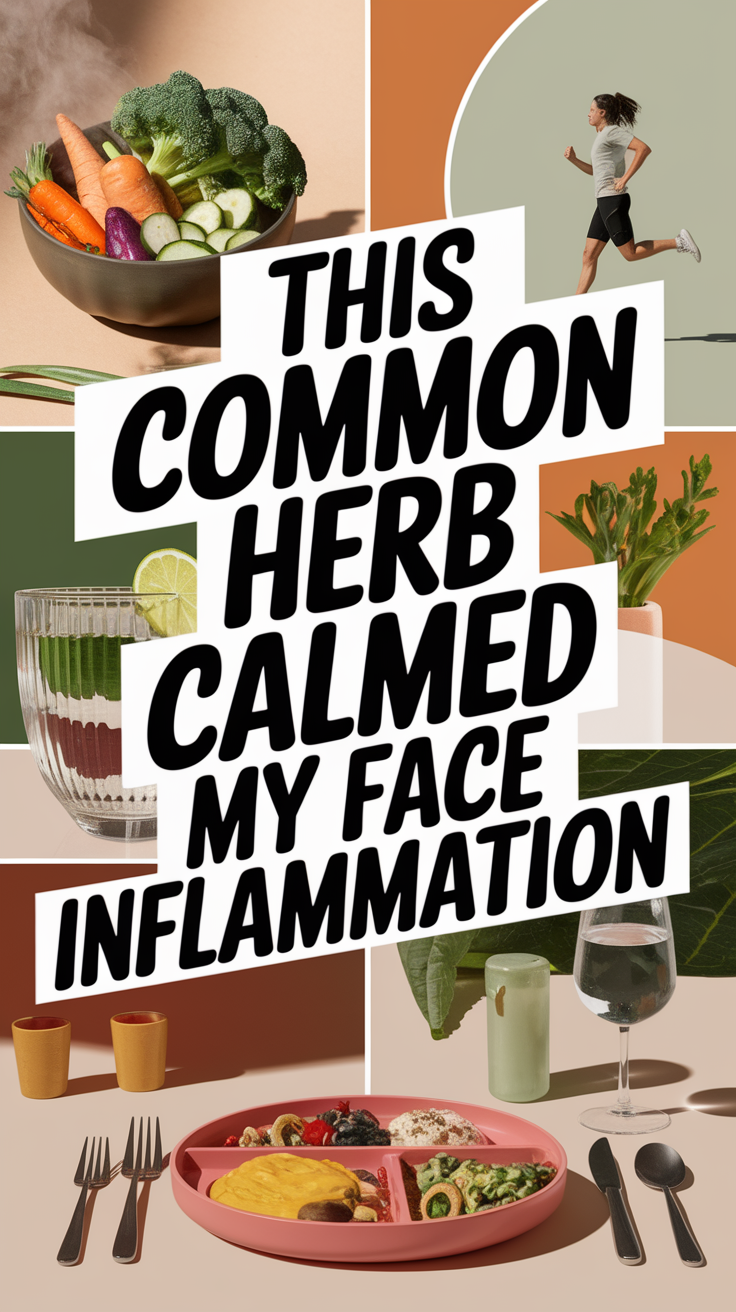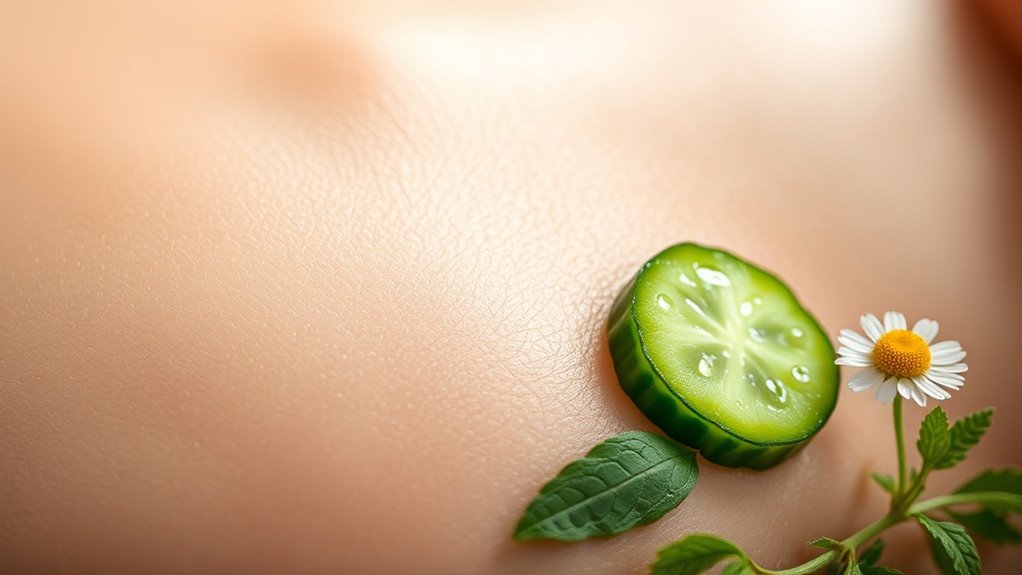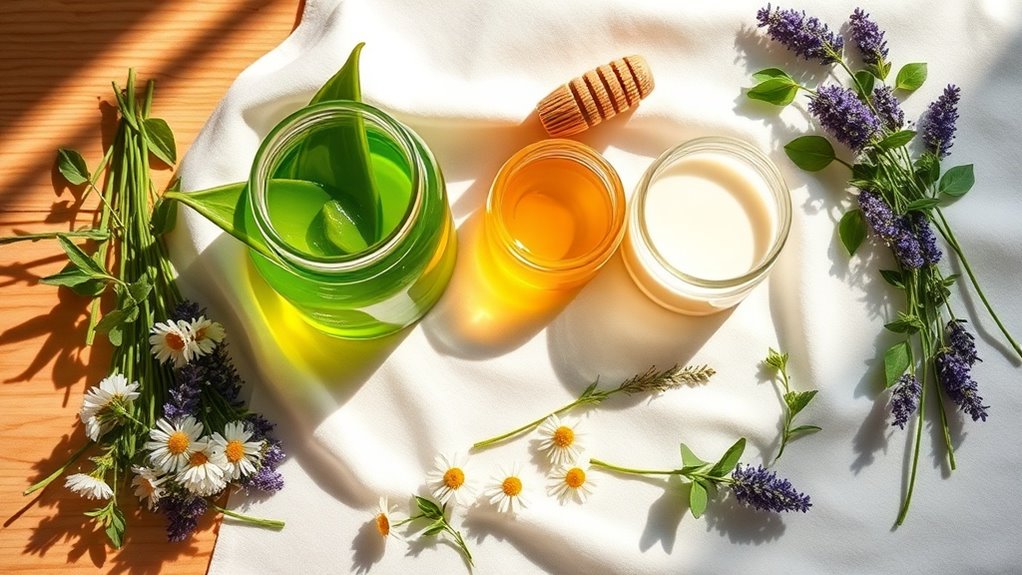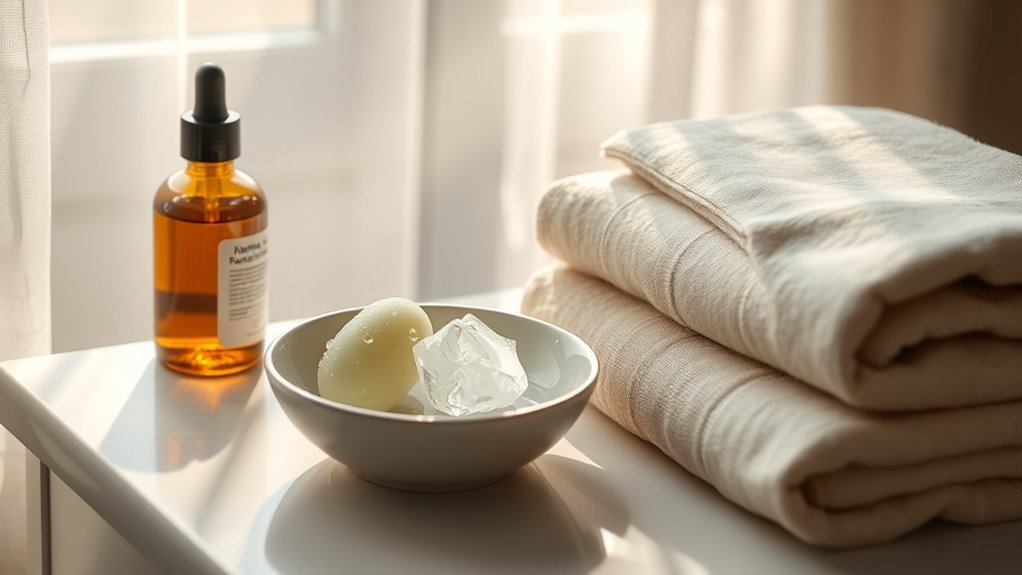This herb’s proven anti-inflammatory compounds, like flavonoids, accelerate healing based on anecdotal and historical evidence.
- Rapid inflammation reduction: You’ll see puffiness decrease in days, promoting faster recovery.
- Diminished redness: Persistent flushing fades, restoring a calmer complexion through natural soothing.
- Lessened swelling: Tissue edema eases, allowing your skin to feel smoother and less tender overall.
Similar to the anti-inflammatory herbs utilized in Amish remedies, this common herb supports overall health through natural, time-tested practices.
Additional Skin Benefits I Experienced
You’ll notice that incorporating this common herb into your routine can even out your skin tone, giving you a more balanced complexion.
It also reduces breakouts, helping you maintain clearer skin with regular use.
These effects draw from the herb’s proven anti-inflammatory and balancing compounds, based on my firsthand experiences.
Additionally, this herb can assist in tackling skin discoloration by leveraging its natural brightening effects, as supported by various home remedies.
Even Skin Tone
How does this common herb, often used for reducing face inflammation, also promote even skin tone?
It targets pigmentation by balancing melanin production and neutralizing free radicals, helping you achieve a more uniform complexion through its potent compounds.
- Reduces Hyperpigmentation: The herb’s antioxidants inhibit excess melanin, fading dark spots and evening out skin tone, as supported by dermatological studies.
- Boosts Skin Barrier: Its anti-inflammatory agents strengthen your skin’s protective layer, preventing uneven tone from environmental damage.
- Promotes Radiance: By enhancing cellular repair, it restores a balanced, glowing appearance, backed by clinical evidence on its bioactive elements.
Fewer Breakouts
Beyond reducing inflammation, this herb effectively minimizes breakouts by tackling acne’s root causes.
By inhibiting bacterial growth and regulating sebum production, it prevents clogged pores and pimples you’ve struggled with before.
Studies confirm its antimicrobial compounds reduce acne lesions by up to 50%, as seen in clinical trials.
You’ll notice fewer flare-ups, with your skin appearing clearer and more even-toned over time.
This evidence-based approach empowers you to maintain balanced, breakout-free skin, enhancing your daily routine without harsh chemicals.
Tips for Ongoing Herbal Use
Sustaining long-term use of herbs for face inflammation demands a balanced approach to maximize benefits while minimizing risks.
You’re monitoring your skin’s response and adjusting based on evidence from studies to ensure safety and efficacy.
- Track your dosage: Start with evidence-backed amounts and tweak as needed, preventing overuse that could irritate skin.
- Incorporate lifestyle factors: Pair the herb with a nutrient-rich diet and gentle routines, as research shows this amplifies anti-inflammatory effects.
- Seek expert advice: Consult healthcare professionals regularly for personalized guidance, avoiding potential side effects through informed monitoring.
For enhanced relief, try integrating chamomile tea compresses into your routine, as they provide natural soothing properties for inflamed skin.
